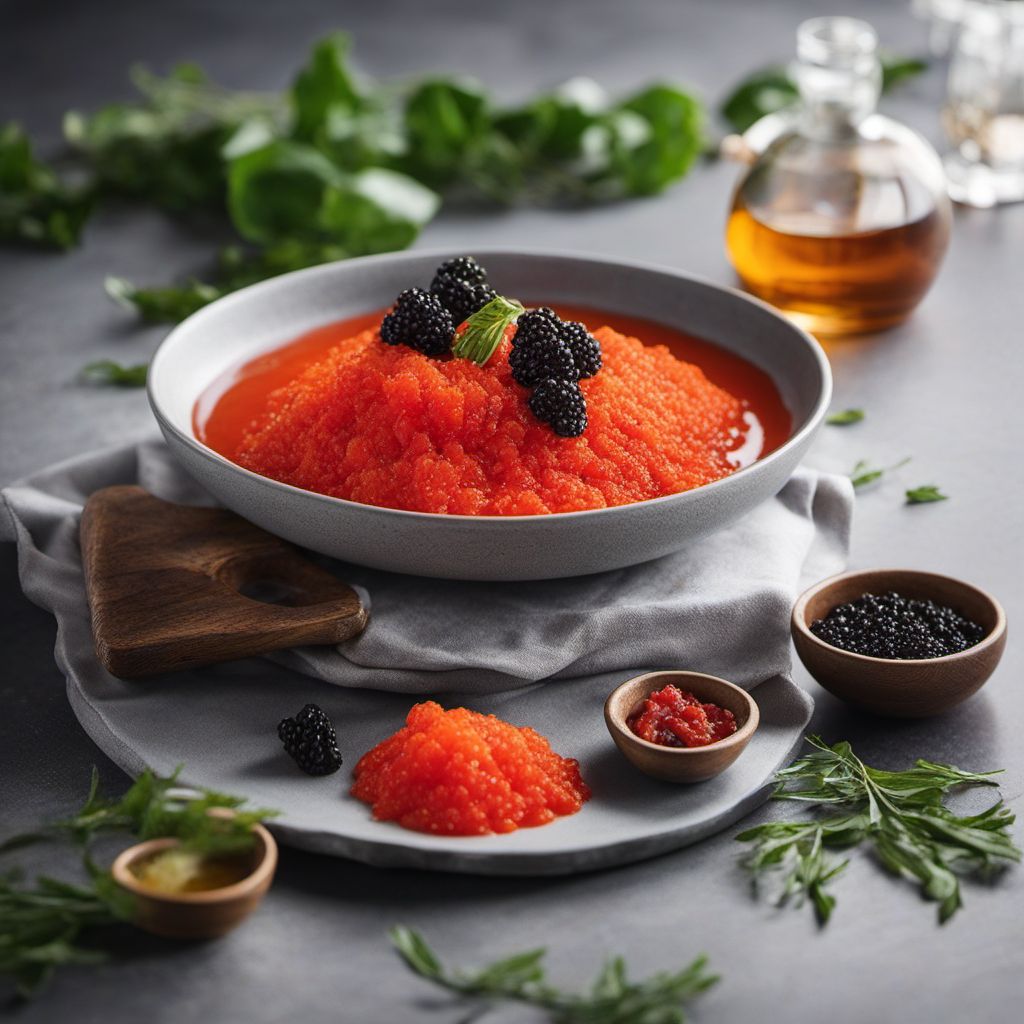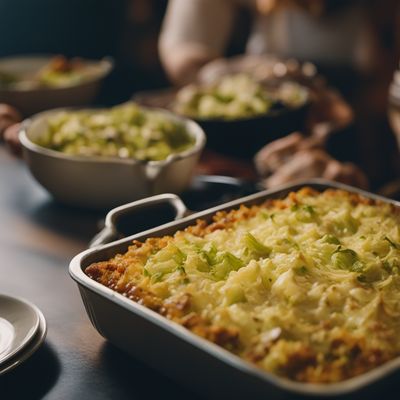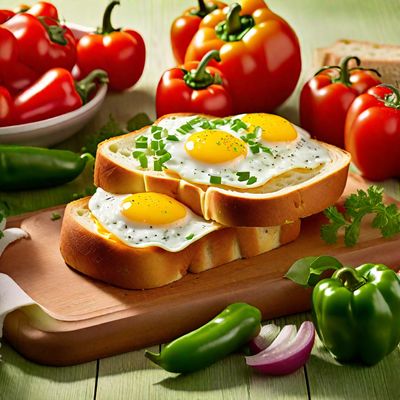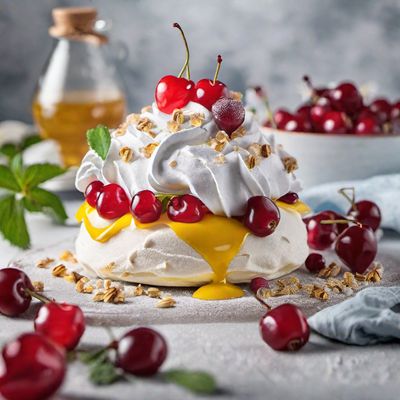
Recipe
Molecular Papricaș de Pește
The Molecular Transformation of Papricaș de Pește: A Fusion of Hungarian Tradition and Molecular Gastronomy
4.8 out of 5
In the realm of molecular gastronomy, we present a unique twist on the classic Hungarian dish, Papricaș de Pește. This avant-garde adaptation combines the traditional flavors of Hungarian cuisine with innovative techniques, resulting in a visually stunning and delectable culinary experience.
Metadata
Preparation time
30 minutes
Cooking time
20 minutes
Total time
50 minutes
Yields
4 servings
Preparation difficulty
Medium
Suitable for
Pescatarian, Gluten-free, Low-carb, Keto-friendly, Dairy-free (if using a non-dairy cream substitute)
Allergens
Fish, Dairy
Not suitable for
Vegan, Vegetarian, Nut-free, Egg-free, Soy-free
Ingredients
In this molecular gastronomy adaptation, we have transformed the traditional Papricaș de Pește into a visually striking dish by incorporating innovative techniques such as spherification and foaming. The flavors remain true to the original, with the paprika-infused sauce and tender fish fillets, but the presentation and texture have been elevated to create a unique and memorable dining experience. We alse have the original recipe for Papricaș de pește, so you can check it out.
-
500g (1.1 lb) fish fillets (such as cod or sea bass) 500g (1.1 lb) fish fillets (such as cod or sea bass)
-
2 tablespoons olive oil 2 tablespoons olive oil
-
1 onion, finely chopped 1 onion, finely chopped
-
2 cloves of garlic, minced 2 cloves of garlic, minced
-
2 tablespoons sweet paprika 2 tablespoons sweet paprika
-
1 cup fish stock 1 cup fish stock
-
1 cup heavy cream 1 cup heavy cream
-
Salt and pepper to taste Salt and pepper to taste
-
50g (1.8 oz) caviar 50g (1.8 oz) caviar
-
2g (0.07 oz) sodium alginate 2g (0.07 oz) sodium alginate
-
500ml (2 cups) water 500ml (2 cups) water
-
2g (0.07 oz) calcium chloride 2g (0.07 oz) calcium chloride
Nutrition
- Calories (kcal / KJ): 450 kcal / 1884 KJ
- Fat (total, saturated): 30g, 15g
- Carbohydrates (total, sugars): 5g, 2g
- Protein: 40g
- Fiber: 1g
- Salt: 1.5g
Preparation
-
1.Heat the olive oil in a pan over medium heat. Sauté the onion and garlic until translucent.
-
2.Add the sweet paprika and cook for another minute to release its flavors.
-
3.Pour in the fish stock and bring to a simmer. Cook for 5 minutes to allow the flavors to meld.
-
4.Add the heavy cream and season with salt and pepper. Simmer for an additional 5 minutes.
-
5.Meanwhile, prepare the caviar spheres by mixing the sodium alginate with water in a blender until fully dissolved.
-
6.In a separate bowl, mix the calcium chloride with water until fully dissolved.
-
7.Using a syringe or dropper, carefully drop small droplets of the sodium alginate mixture into the calcium chloride bath. Let them sit for 1-2 minutes to form spheres.
-
8.Gently remove the caviar spheres from the calcium chloride bath and rinse them in water.
-
9.Pan-sear the fish fillets in a separate pan until cooked through and golden brown.
-
10.To serve, place the fish fillets on a plate, spoon the paprika sauce over them, and garnish with the caviar spheres and a dollop of fish foam.
Treat your ingredients with care...
- Fish fillets — Ensure the fillets are fresh and of high quality to achieve the best flavor and texture.
- Caviar — Opt for high-quality caviar to enhance the overall taste and presentation of the dish.
- Sodium alginate — When preparing the caviar spheres, make sure the sodium alginate is fully dissolved to achieve the desired texture.
- Calcium chloride — The calcium chloride bath should be well-mixed to ensure proper sphere formation.
- Fish foam — Use a blender or immersion blender to create a light and airy foam from the fish stock.
Tips & Tricks
- For an extra burst of flavor, sprinkle some smoked paprika over the finished dish.
- Experiment with different types of fish fillets to find your preferred flavor combination.
- If you don't have access to caviar, you can substitute it with small spheres made from vegetable juices or fruit purees.
- To achieve a more stable foam, you can use a culinary foam stabilizer.
- Serve the dish immediately after plating to preserve the texture and temperature.
Serving advice
Serve the Molecular Papricaș de Pește as the main course of an elegant dinner. Pair it with a side of buttered asparagus and a crusty baguette to soak up the flavorful sauce.
Presentation advice
Create an artistic presentation by arranging the fish fillets in a circular pattern on the plate. Place the caviar spheres strategically around the plate, and finish with a drizzle of the fish foam. Garnish with fresh herbs, such as dill or parsley, for a pop of color.
More recipes...
For Papricaș de pește
For Hungarian cuisine » Browse all
More Hungarian cuisine dishes » Browse all

Majgaluska leves
Meatball soup
Majgaluska leves is a traditional Hungarian soup that is perfect for cold weather. It is a hearty and flavorful soup that is made with a variety...

Rakott káposzta
Layered Cabbage Casserole
Rakott káposzta is a traditional Hungarian dish made with layered cabbage, ground pork, and sour cream. It is a hearty and comforting meal that is...

Dobostorta
Dobos Torte
Dobostorta is a Hungarian cake that is made with layers of sponge cake and chocolate buttercream. It is a rich and decadent dessert that is...









